The complete monitoring experience for your phone
Get XNSPY and start tracking calls, texts, multimedia, locations and more on any phone!
Get Started Now Live DemoSocial media continues to shape the way we communicate, especially among teens and young adults. With social media daily usage now averaging 143 minutes, it is part of everyday life. But behind the trending hashtags and viral videos lies a darker reality in the form of dangerous challenges.
What initially appears as harmless fun can quickly escalate, driven by peer pressure and the constant push for online validation. As the risky challenges grow in popularity across platforms, understanding their appeal and hidden risks becomes more important than ever.
This article, therefore, explores 20 different types of dangerous social media challenges and their impact on children’s lives. Plus, we will discuss practical ways parents and caregivers can protect children from falling into these harmful social media trends and encourage safer online behavior.
How Dangerous Social Media Trends Become Mainstream
Social media trends often begin in small online circles but can quickly gain momentum and spread across platforms. The more that people react to a post, the more the platform promotes it, making it easier for others, including kids, to find.
Exposure to such content encourages them to replicate the trend, not necessarily to take part in the danger, but to join in on the hype. Moreover, when influencers or viral personalities participate, the trend gains legitimacy and appeal, especially among younger users seeking validation.
Over time, this constant exposure makes dangerous behaviour feel normal to their impressionable minds.
Dangerous Social Media Challenges Statistics: How Widespread Are They?
Here we have listed some of the most prominent statistics that showcase the dangers of social media challenges:
1. 67% of teens have reported seeing at least one harmful or dangerous challenge online in the past year.
2. Emergency department visits linked to social-media-driven stunts rose by 18%, driven largely by ingestion and physical stunt injuries.
3. TikTok and Instagram removed 34% of videos associated with “self-harm or dangerous acts” in the first quarter of 2025.
4. 70% of parents say they are unaware of the specific dangerous challenges their children encounter online.
5. 60% of school nurses reported treating at least one student injured by a social media stunt.
Here Are Some Blogs You Shouldn’t Miss
💣 Dangerous TikTok Challenges Every Parent Should Be Aware Of
🚑 99+ Teen Mental Health Statistics & Facts
⚠️ 27+ Most Dangerous Apps for Kids: Names, Dangers, and Alternatives
💸 15 WhatsApp Scams You Didn’t Know About + How to Prevent Them
Dumbest Challenges on Social Media
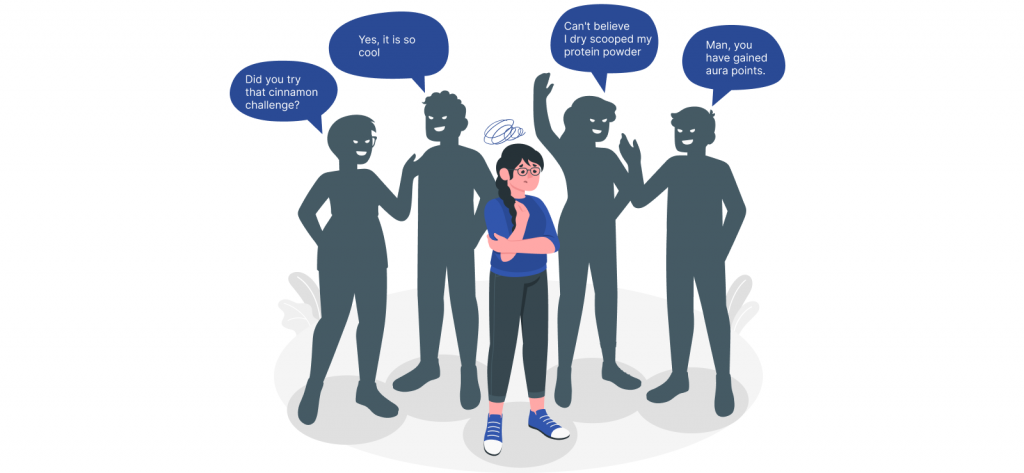
We have compiled a list of the strangest social media trends that can negatively impact your child or teen.
1. The Cinnamon and Nutmeg Challenge
The Cinnamon Challenge encourages people, especially teens, to swallow a spoonful of dry cinnamon without any water. Although it may look harmless in videos, the fine powder can easily be inhaled, leading to choking or vomiting.
Additionally, the growing concern around the cinnamon challenge death count shows that this trend is far more dangerous than it seems. Several cases have resulted in hospitalization, and at least one fatality has been linked to the challenge.
The Nutmeg Challenge, on the other hand, encourages kids to consume large amounts of nutmeg, a common kitchen spice. While small amounts are safe in food, nutmeg contains myristicin, which can cause hallucinations, nausea, dizziness, and even seizures in high doses. Ingesting a large amount of it for a social media challenge can prove fatal and has led to many poisoning cases.
2. The Tide Pod Challenge
The Tide Pod Challenge began as an internet joke mocking how much detergent pods resemble candy. Unfortunately, what started as satire quickly turned into a dangerous hazard as some teens took it literally and began filming themselves biting or eating the pods.
And since these pods contain highly concentrated detergent, they can cause life-threatening complications, and, in some cases, death. Nonetheless, the challenge gained rapid attention online and continues to take social media by storm to the present day despite many warnings by officials and manufacturers.
3. The Dry-Scooping Challenge
The Dry-scooping challenge started gaining popularity on fitness Instagram, where influencers promoted it as a way to boost workout performance instantly. Participants of this trend attempted to swallow pre-workout powder without mixing it with water.
However, pre-workout powders contain high levels of caffeine and stimulants, and taking them dry can lead to choking and increased heart palpitations. Therefore, what may seem like a fitness shortcut is a serious health risk, especially for teens unaware of how these powders impact their bodies when misused.
4. Blackout Rage Gallon Challenge (BORG)
The Blackout Rage Gallon Challenge (BORG) is a dangerous drinking trend that started on college campuses and spread through TikTok. People taking part in this trend mix a gallon of water with vodka, electrolyte powder, and flavouring, before consuming it at parties.
Though the challenge is marked as a “safer” way to drink due to added electrolytes, it actually encourages binge drinking. Participants often consume large amounts of alcohol quickly, increasing the risk of alcohol poisoning and blackouts, all under the illusion of hydration.
5. The Flip Flop Slap Challenge
In the category of dumbest challenges on social media, the Flip Flop Slap challenge takes the cake. This social media trend involves participants slapping unsuspecting friends, or sometimes strangers, with a flip-flop while filming their reactions. By gaining popularity on TikTok and Instagram, it has become a major challenge in 2025 in the world of prank content.
However, what appears as a harmless, silly act can easily cross the line into physical assault, leading to injuries and conflict.
Life-threatening Social Media Challenges
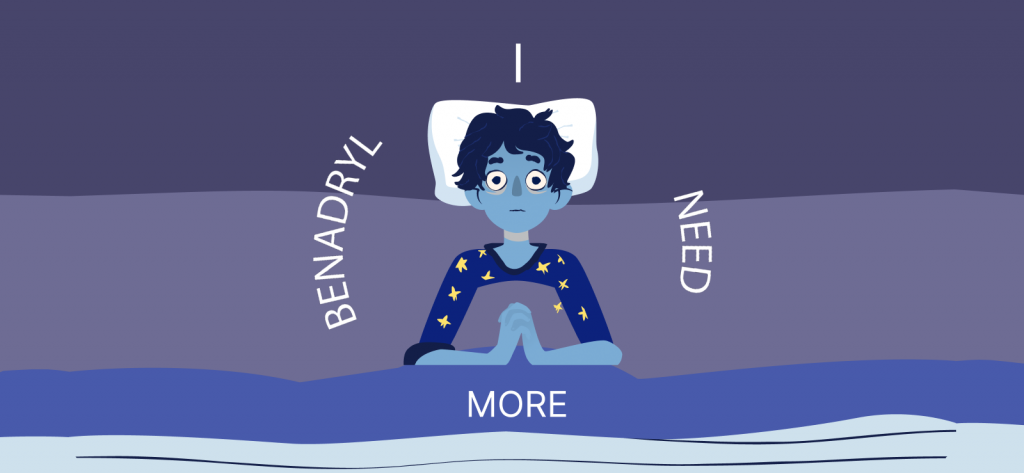
Some social media challenges go far beyond silly stunts, branching into life-threatening situations. Such trends often involve risky behaviour that puts participants in real-life physical danger. What may begin as a viral moment can end in serious injury or even death.
To bring awareness of such dangerous social media trends, we have discussed the most life-threatening social media challenges below.
6. The Paqui One-Chip Challenge
The Paqui One-Chip Challenge dares participants to eat a single, extremely spicy tortilla chip made with Carolina Reaper and Naga Viper peppers, which are two of the hottest peppers in the world. Made popular by the YouTube food community, the challenge gained traction on TikTok too, with people filming their intense reactions.
While it may seem like a fun test of spice tolerance, the challenge has led to severe health issues, with a lot of teens experiencing difficulty breathing and vomiting on camera.
7. Car Surfing Challenge
Car surfing is a recurring social media challenge that continues to resurface despite its serious risks. Recently, it has reappeared in a new form where individuals swerve their cars on busy roads while blasting Brazilian phonk music, adding intensity to an already dangerous stunt.
This trend highlights the growing dangers of social media challenges, as it not only increases the risk of severe accidents but may also encourage teens to engage in underage or reckless driving without understanding the consequences.
8. The Sleepy Chicken Challenge
Another dangerous social media challenge that has emerged is the Sleepy Chicken Challenge. Popularised on TikTok as a bizarre joke, it involves cooking chicken in over-the-counter cold and flu medicine, such as Nyquil, and then consuming it.
However, the challenge is anything but harmless, as heating the medication causes its ingredients to become more concentrated and chemically altered, making it extremely toxic. Eating or even inhaling such food can lead to serious health effects, such as breathing problems and seizures.

When Trends Turn Toxic, You’ll Know First
XNSPY keeps you updated before things spiral.
9. Benadryl Challenge
The Benadryl Challenge involves participants taking excessive amounts of allergy medication, Benadryl, in an attempt to experience hallucinations. The challenge first became popular on TikTok, where users shared videos of their reactions, often framing it as daring or entertaining.
In reality, overdosing on Benadryl can cause severe health effects. Because the medication is so easy to access, this trend poses a serious threat to young people who may not fully understand the consequences of misusing over-the-counter drugs.
10. The Black-out Challenge
The Black-Out Challenge, also called the Choking Challenge, is a highly dangerous trend where young people deliberately cut off their airflow by holding their breath or using items such as cords in an attempt to feel a brief rush or high. On platforms such as TikTok and YouTube, the challenge is often treated as a game. But it can have deadly consequences.
Depriving the brain of oxygen can lead to unconsciousness, brain damage, and in more serious cases, death. Sadly, however, this trend continues to be a serious threat due to its popularity, especially to teens and young people.
Harmful Social Media Trends
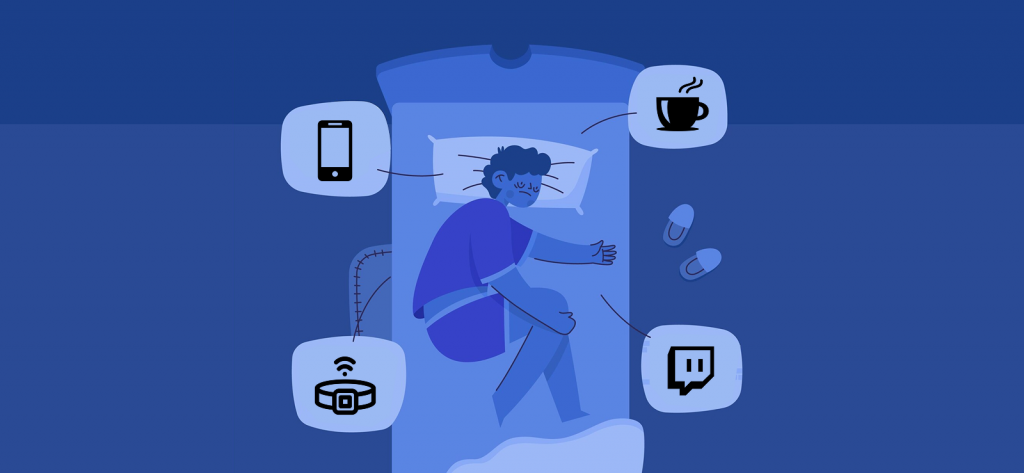
This is not all, though. Social media trends can sometimes mask real danger behind what looks like fun or harmless content, too, especially to younger audiences. Many of these challenges gain popularity through viral sharing, leading teens to take serious risks unknowingly.
Keep reading to know about the most harmful social media trends that are trending right now.
11. No Sleep Streams
No Sleep streams are a growing trend on platforms like Twitch and TikTok, where streamers attempt to stay awake for extremely long periods while broadcasting live. Such lives are framed as entertainment or endurance challenges, with viewers encouraged to donate or interact to keep the streamer awake.
While they may seem harmless, they can have lasting impacts on young and impressionable audiences who might attempt to replicate such challenges for online attention.
12. Shock Collar Donations
A troubling new trend gaining traction is the Shock Collar Donation challenge on Twitch, where streamers wear electronic dog collars and allow viewers to trigger electric shocks in exchange for donations. Though often framed as edgy entertainment, these streams prioritize profit and engagement over safety and well-being.
Trends like this contribute to the rising numbers in dangerous social media challenges statistics, reflecting how some online content normalizes self-harm and sets a harmful example for young audiences.
13. Caffeine Overload Challenge
The Caffeine Overload Challenge is a risky trend that has been popularized on platforms like TikTok and YouTube. Often showcased as a way to boost energy or test limits, participants use energy drinks and powders to push their bodies beyond safe levels.
Such high doses of caffeine can lead to serious health issues, including rapid heart rate and high blood pressure. Therefore, for teens, whose bodies are more sensitive to stimulants, this challenge poses a real danger and highlights how easily social media can normalise extreme behaviour.
14. Doxxing Roulette
The Doxxing Roulette is a dangerous online challenge where users reveal personal or sensitive information at random through livestreams or TikTok. By acting on the shock value, this trend attempts to gain attention or provoke reactions.
A vast majority of participants view this challenge as a game. However, divulging so much personal information can lead to serious consequences such as harassment and stalking, with a long-lasting and legally serious fallout.
15. “Mystery Drink” Subs Challenges
A bizarre new trend on livestreaming platforms, the “Mystery Drink,” Subs challenges involve streamers creating bizarre or disgusting drink mixtures and agreeing to consume them. Streamers aim to increase their reach by adding a new item to the drink every time they receive a new subscriber or donation.
While the challenge is meant to entertain viewers and boost engagement, it also promotes a culture of unsafe behaviour for online attention, sending the wrong message to younger viewers about what’s acceptable in the pursuit of popularity.
Dangerous Social Media Pranks
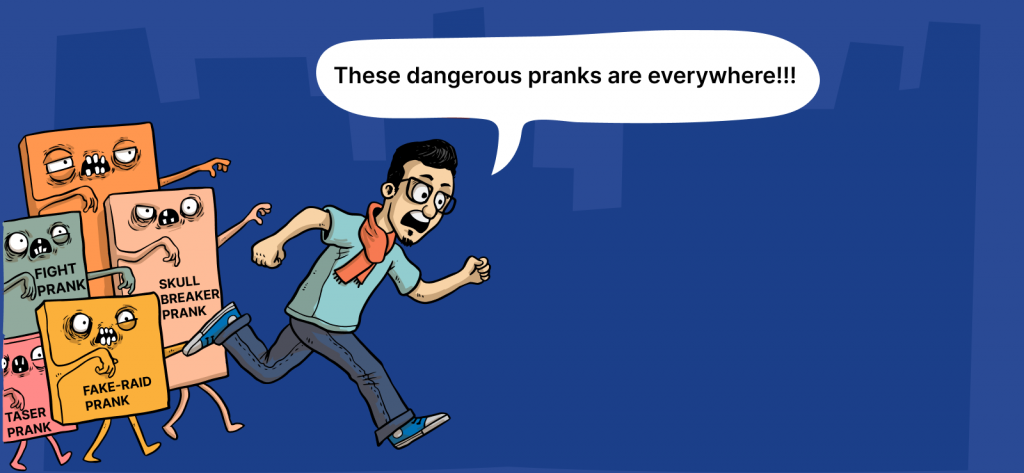
Today, as the drive for online attention grows, some of the most dangerous social media challenges now come in the form of pranks that can lead to real-world injuries or legal trouble. Below is a list of pranks that have gained popularity online, yet pose serious risks to those who take part in them.
16. Fighting in Front of Children Prank
Some creators have taken to faking arguments or fights in front of their children, aiming to film their startled or emotional responses. What may seem like light-hearted content often leaves kids visibly distressed.
The problem is that children may not realise it’s a joke, which can affect their sense of trust and emotional well-being. Therefore, a so-called prank becomes a harmful experience with lasting psychological impacts for young viewers.

XNSPY Packs More Features Than Any Other App
From chats to location, we track it all – live.
17. Fake “Raid” Prank
The Fake “Raid” prank, initially popularised by the famous streamer Kai Cenat, involves participants staging a fake police raid during a live broadcast, using actors and dramatic reactions to simulate a real emergency. The intent is to shock and amuse viewers, but it can cause real panic among audiences and even lead to law enforcement involvement.
These fake scenarios waste resources and risk legal consequences, making them far more dangerous than entertaining in both online and offline contexts.
18. Moaning in a Stranger’s Ear Prank
The Moaning in a Stranger’s Ear is an invasive prank that involves sneaking up behind strangers in public places and making exaggerated moaning sounds near their ears.
Unfortunately, the victims of this trend are usually left confused or alarmed, and the reactions can sometimes lead to physical altercations. Therefore, even if intended as humour, the prank violates personal boundaries and can make people feel harassed or threatened.
That is why the trend raises serious concerns about consent, safety, and how far people will go for online attention and viral content.
19. Taser and Stun Gun Pranks
In these risky pranks, streamers or creators shock others using stun guns or tasers, all while filming the reactions. Though meant to entertain, these stunts pose serious risks, including burns, injuries, or heart issues.
They also send a harmful message by turning dangerous tools into sources of comedy. As these videos circulate, they encourage impressionable viewers to replicate the behaviour, unaware of the potential legal and physical consequences involved.
20. Skull Breaker Challenge
The Skull Breaker Challenge involves two people convincing a third to jump, only to kick their legs out mid-air, causing them to fall backwards. Originally shared as a prank on TikTok, the challenge has led to broken bones, head trauma, and even spinal injuries.
It masquerades as a joke but is clearly designed to hurt. A challenge like this highlights the dangerous extremes some trends reach, where physical harm is exchanged for viral views.
The Negative Effects of Dangerous Trends on Social Media
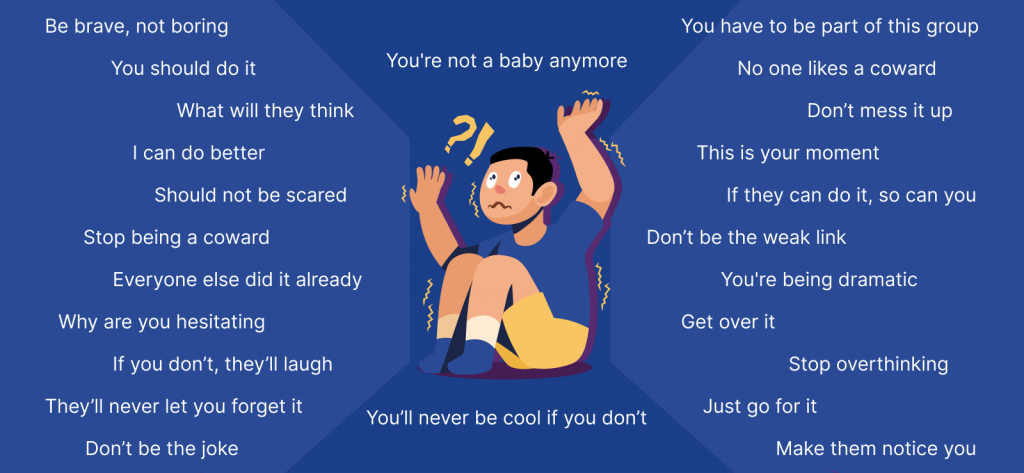
As is apparent in our previous discussion, the rise of dangerous online challenges has real-world consequences that go far beyond the screen. What starts as a viral challenge can quickly escalate into serious physical and emotional harm. Below, we have explored the most concerning effects these trends are having on young users.
Physical Repercussions: Cinnamon Challenge Death Count
One of the most recognizable examples of physical harm caused by social media dangerous challenges is the Cinnamon Challenge. The death of a 4-year-old boy after attempting this challenge is a sobering reminder that the dangers of these trends are very real and ongoing.
Though this is not the only trend linked to the death of underage children over the years. The Blackout, Sleepy Chicken, Benadryl, and others of the like are equally harmful for tweens and teens, too.
Psychological Repercussions: BORG and Others
Certain social media trends can seriously impact a child’s mental health. Challenges like the BORG, the Doxxing Challenge, and others go beyond causing temporary physical symptoms or hallucinations. Instead, they can have lasting psychological impacts.
Teens who experience a temporary “high” from participating in said challenges may seek to recreate that feeling, potentially leading to risky behaviors and addiction patterns. Moreover, these challenges can disrupt the natural development of brain chemistry in adolescents, whose brains are still maturing.
Legal Repurcussions: Car Surfing and More
To make matters worse, some challenges even cross the line into criminal behavior. Car Surfing, for instance, has led to fatal accidents and legal charges for reckless behavior. Fake “raid” pranks, taser pranks, etc., can result in serious legal consequences for those involved.
This year, especially, these trends have gained a lot of momentum, owing to big names on social media such as iShowspeed and Kai Cenat. While these people may make it look like a fun and adventurous activity, law enforcement treats these actions seriously.
Why Your Kid Might Take Part in Dangerous Challenges on Social Media
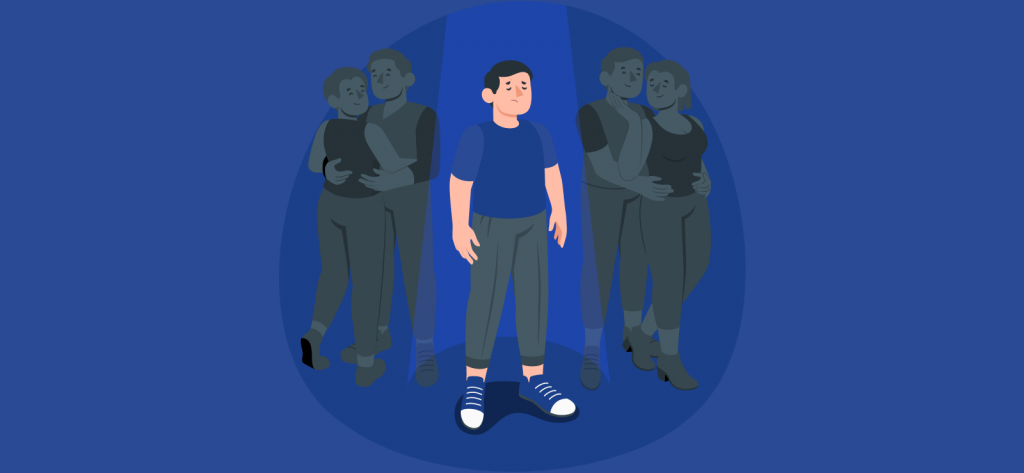
Understanding why kids take part in dangerous trends on social media is key to helping prevent them. Therefore, the next section explores the underlying reasons that drive young people to engage in risky behavior online.
1. The Fear of Missing Out
Many teens feel intense pressure to stay connected to their peers. Therefore, when they see others participating in viral challenges, they may fear being left out or seen as boring if they do not join in. Such a fear of missing out can push them to engage in risky behaviors to fit in or gain attention.
2. Peer Pressure
Peer influence is another factor that plays a powerful role in teens’ decision-making, especially when trends spread rapidly. Friends or influencers may encourage participation in dangerous challenges, making it hard for your kids to say no without feeling judged or excluded.
Overall, extreme pressures stemming from the need to fit in can override a young person’s better judgment, leading them to take part despite knowing the risk.
3. Lack of Awareness
A lot of young people take part in risky challenges without fully understanding the dangers involved. To them, these trends may seem entertaining or harmless, particularly when they see others their age doing the same things.
Without clear knowledge of the potential for serious injury or emotional trauma, they are more likely to join in social media challenges without thinking twice.
4. Desire to Belong or Garner Attention
The urge to fit in and be seen can strongly influence teens on social media. Platforms often promote viral trends through algorithms, rewarding users who follow popular content with more visibility and engagement. As a result, many children join dangerous challenges hoping to gain likes and online recognition.
Reduce the Dangers of Social Media Challenges With 4 Steps
As is evident, dangerous social media pranks and challenges can put kids at serious risk, both physically and emotionally. However, as a parent, taking proactive steps can make a big difference in keeping your child safe online.
Therefore, we have discussed below the four most practical ways to help reduce the dangers of these harmful trends.
1. Encourage Open and Honest Communication
Building a foundation of trust is one of the most effective ways to protect your child from risky social media challenges. That is why it is important to create an environment where your child feels safe discussing what they encounter online.
In order to ensure this, you must ask open-ended questions and listen to their experiences without judgment. As a result of your encouragement and discussions, kids are far more likely to come to you before engaging in something harmful they’ve seen online.
2. Set Ground Rules for Online Behaviour
Establishing clear expectations helps children understand what is and is not acceptable online. Therefore, you must set age-appropriate boundaries around social media use and the types of content they can engage with.
Additionally, involving your child in creating these rules is another integral step to make them feel included while also ensuring discipline. Such consistent guidance will not only reduce their exposure to the dangers of social media but also teach them to think carefully about their online actions.
3. Keep Yourself Updated on the Most Dangerous Social Media Challenges
Being aware of the latest online trends is essential to keep your child safe. Moreover, following safety tips from official social media platforms can help you spot harmful challenges early.
By using these measures to stay informed, you’ll be better prepared to talk to your child and help them avoid risky behaviors before they become a real threat.
4. Use XNSPY Social Media Monitoring App
One practical way to stay involved in your child’s digital world is by using the XNSPY social media monitoring app.
Since many dangerous challenges on social media begin on platforms like TikTok and Instagram, XNSPY allows you to keep an eye on these apps to see what kind of content your child views.
In addition, the app includes a screen recorder feature, which lets you see real-time snapshots of what’s happening on your child’s phone screen. Keeping yourself aware of what goes on through the screen recorder can be useful for understanding how they’re engaging with viral content.
Moreover, its keylogger records keystrokes, so you can review what your child is searching for and detect early signs of curiosity about risky trends.
Another helpful feature is screen time tracking, which enables you to see how long your child spends on specific apps. Information like this can guide conversations about healthy digital habits. Finally, XNSPY also includes an app blocker, allowing you to limit access to specific apps that might be promoting harmful challenges.
While no app can replace open communication, tools like XNSPY can support parents in staying aware and encouraging safer online behavior.
Conclusion
Dangerous social media challenges are more than fleeting internet trends. They reflect a deeper issue of peer pressure and risk-taking behavior among teens and young users. While some of these challenges may seem harmless at first glance, many carry severe physical, emotional, and even legal consequences.
As parents, staying informed and maintaining open conversations is key to protecting young people from these harmful digital influences. All in all, awareness is the first step toward prevention, and every step counts.
FAQs
How many teens engage in dangerous challenges on social media?
Around 1 in 4 teens have taken part in viral online challenges, with most of these linked to social media’s dangerous challenges. These numbers reveal how deeply such risky trends have become part of teen culture. Not only that, but also peer pressure and the desire for online recognition often drive young people to join these challenges, sometimes without fully understanding the potential dangers.
Are social media platforms doing enough to stop dangerous challenges?
While many platforms have policies to remove harmful content, enforcement often struggles to keep pace with fast-spreading viral trends. Platforms like TikTok and YouTube do issue warnings or remove dangerous videos, but many harmful challenges go viral before they are flagged. While moderation efforts are improving, many experts argue that quicker, more proactive actions are still urgently needed.
What age group is most at risk of participating in social media dangerous challenges?
Teens aged 13 to 17 are the most active on social media and are highly susceptible to peer pressure. The following age group frequently seeks validation online, making them especially vulnerable to viral challenges. Therefore, middle schoolers and early high school students are particularly at risk from the negative influences of these trends.
How can I help my child avoid dangerous online challenges without restricting their freedom?
Maintaining open conversations about online behavior and promoting critical thinking are key to helping your child steer clear of harmful trends without limiting their independence. If you feel like additional support is necessary, tools like XNSPY can help. With features for monitoring screen time and social media activity, such tools can guide safer online choices while still respecting your child’s privacy.
Do dangerous challenges spread across multiple platforms or stay on one?
Dangerous challenges often originate on platforms like TikTok or YouTube but quickly spread to others, such as Instagram and Snapchat. The viral nature of social media means trends move rapidly across different apps, with algorithms amplifying their reach. As a result, content that trends on one platform often becomes highly visible on others, too.
4 Comments
Leave a reply:
Your email address will not be published. Required fields are marked*

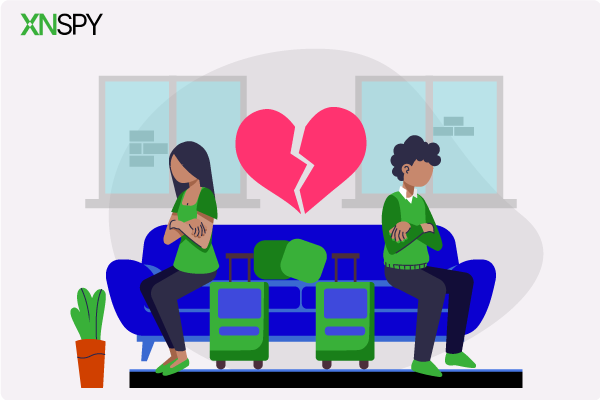
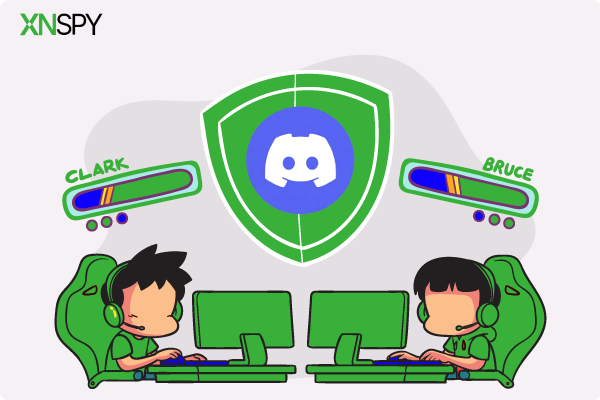

Honore Couture
August 13, 2025 at 3:05 pmCan we not just ban social media for everyone? This is becoming increasingly concerning
Bryan Steve
August 19, 2025 at 2:50 pmCan we not just ban social media for everyone? This is becoming increasingly concerning
Senorita
August 22, 2025 at 3:00 pmThese social media challenges are really getting out of hand
Lucy James
September 5, 2025 at 2:29 pmI have tried that!